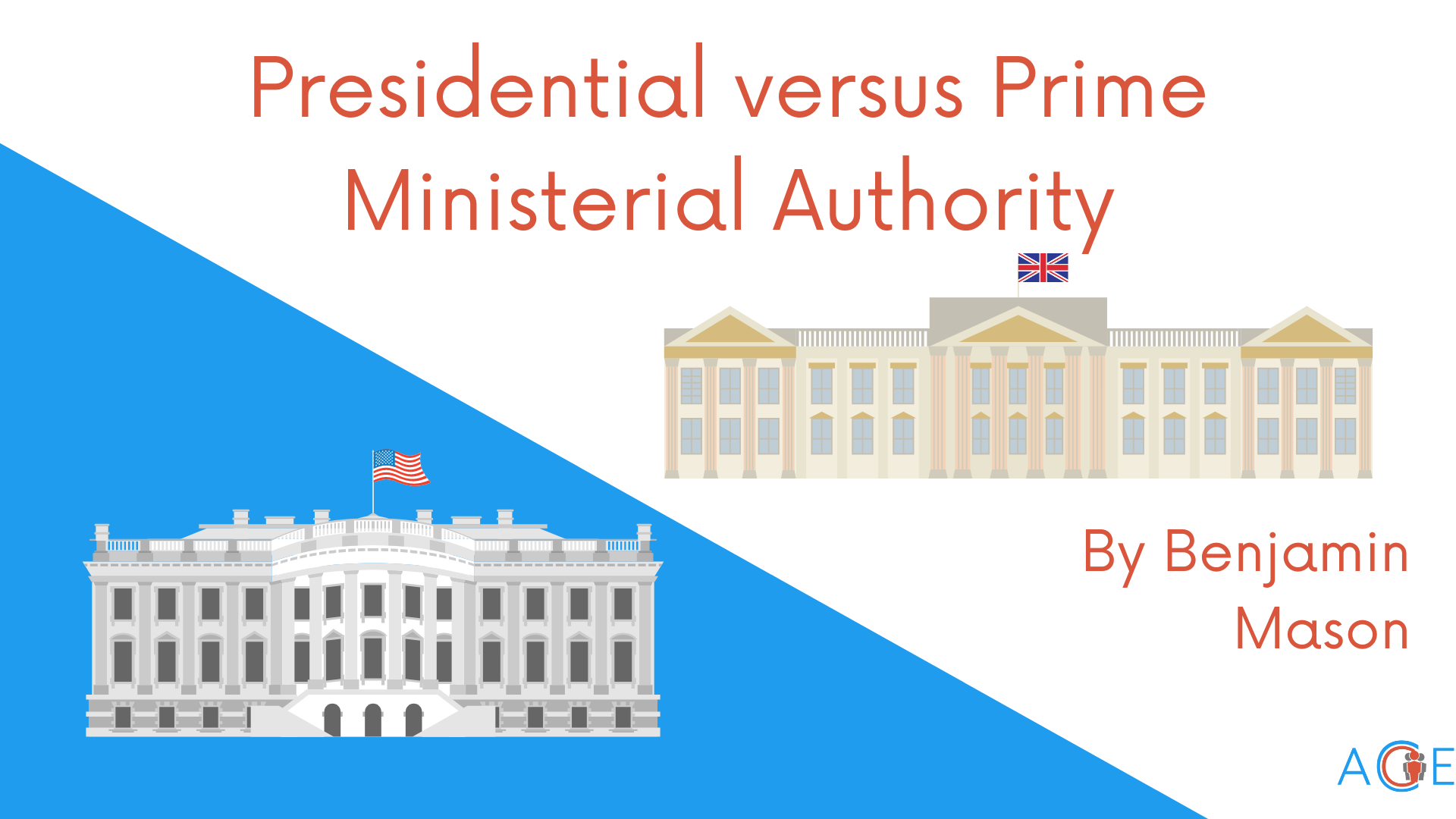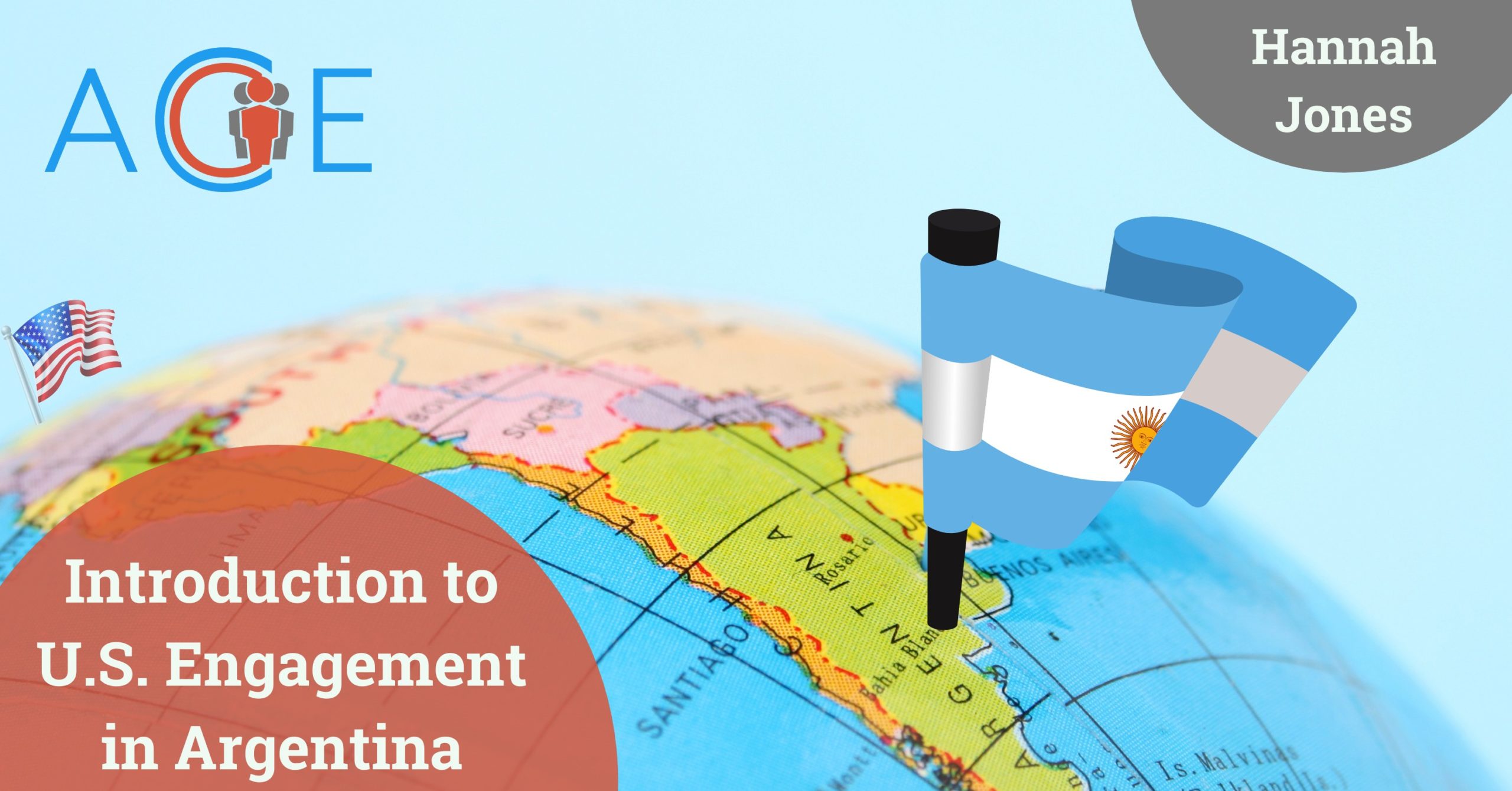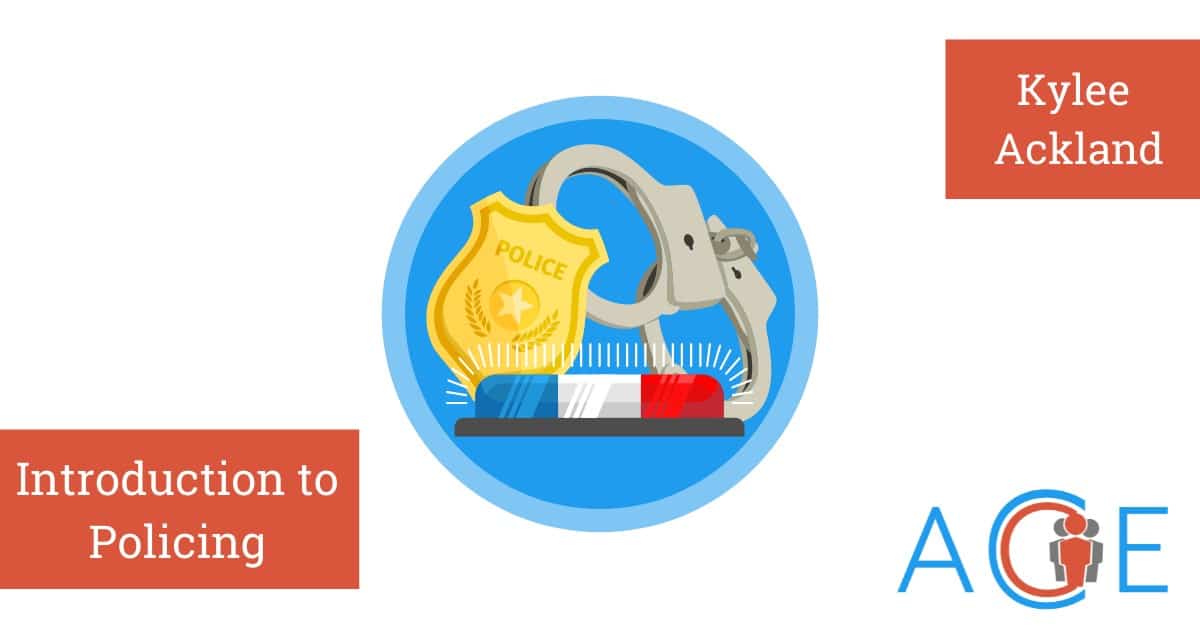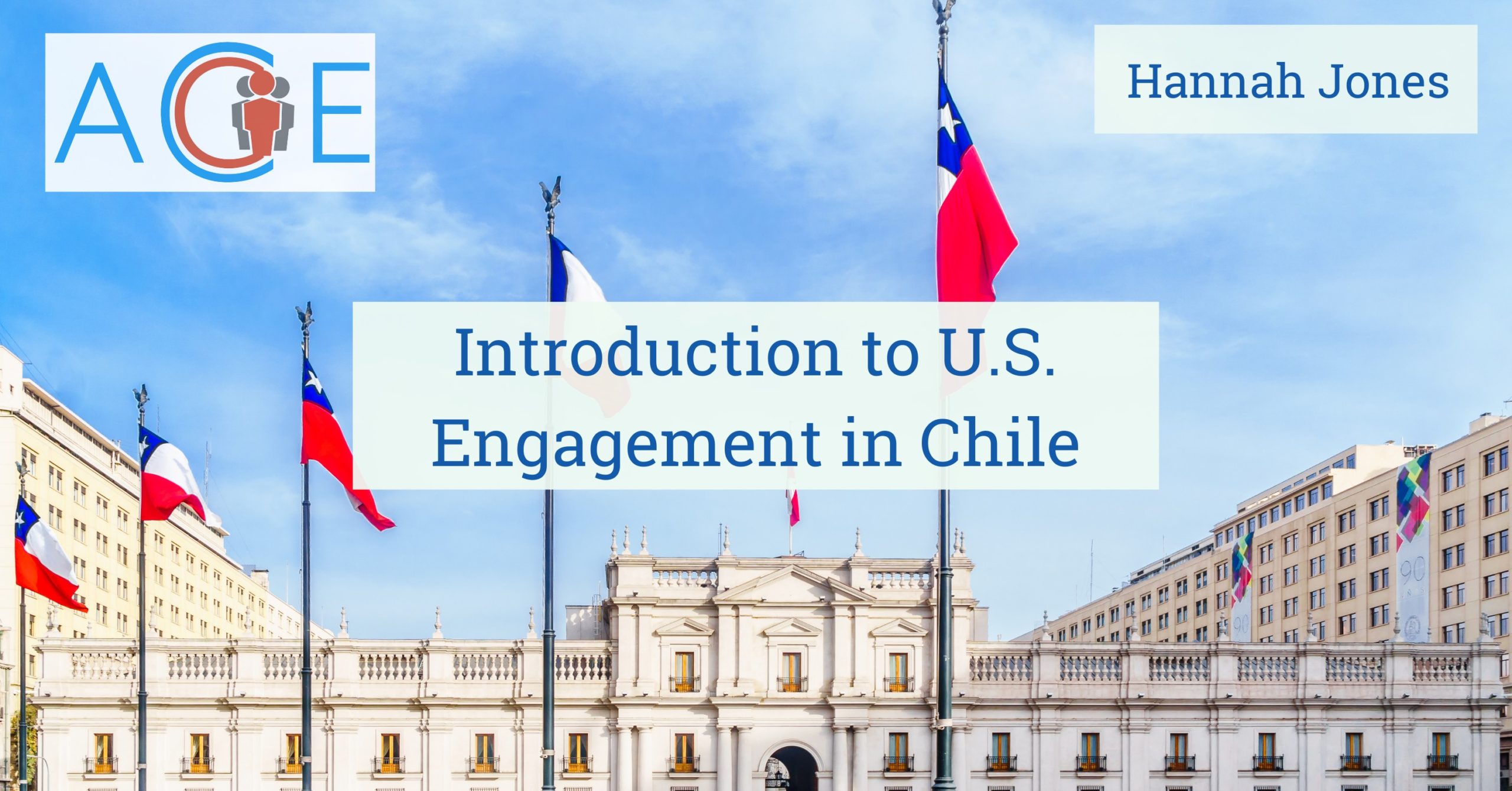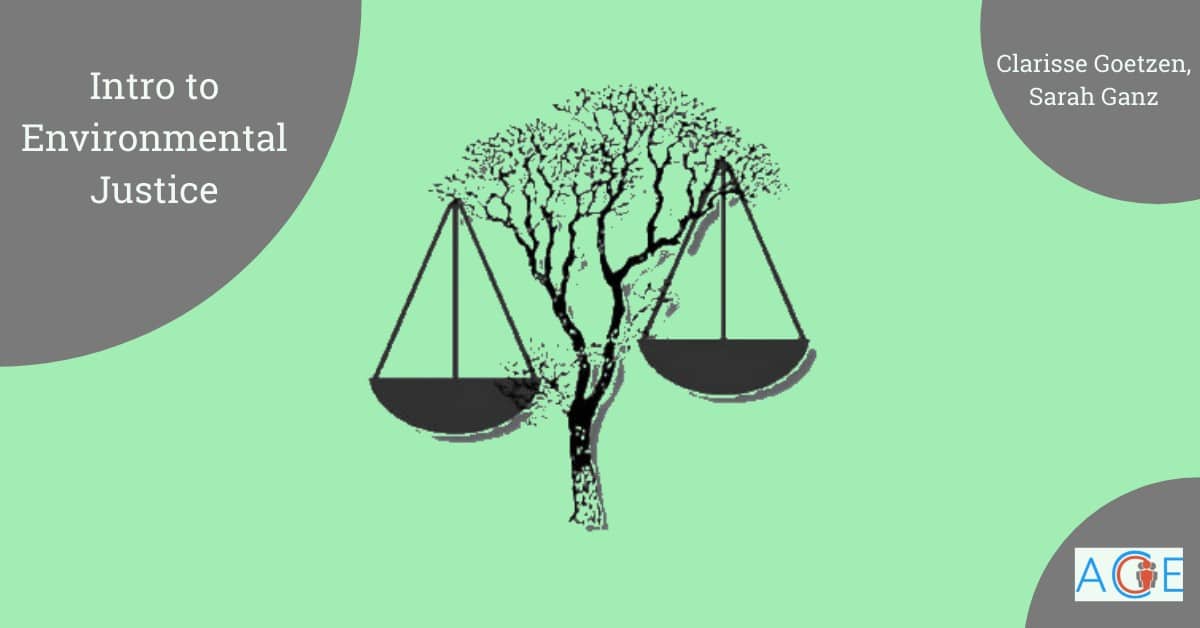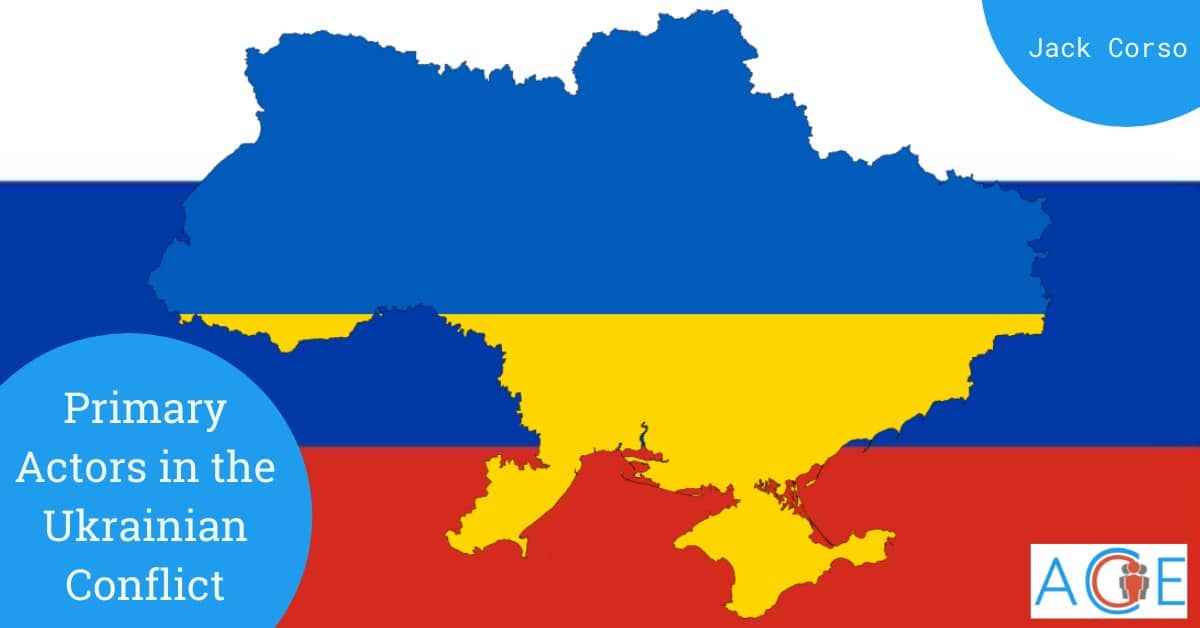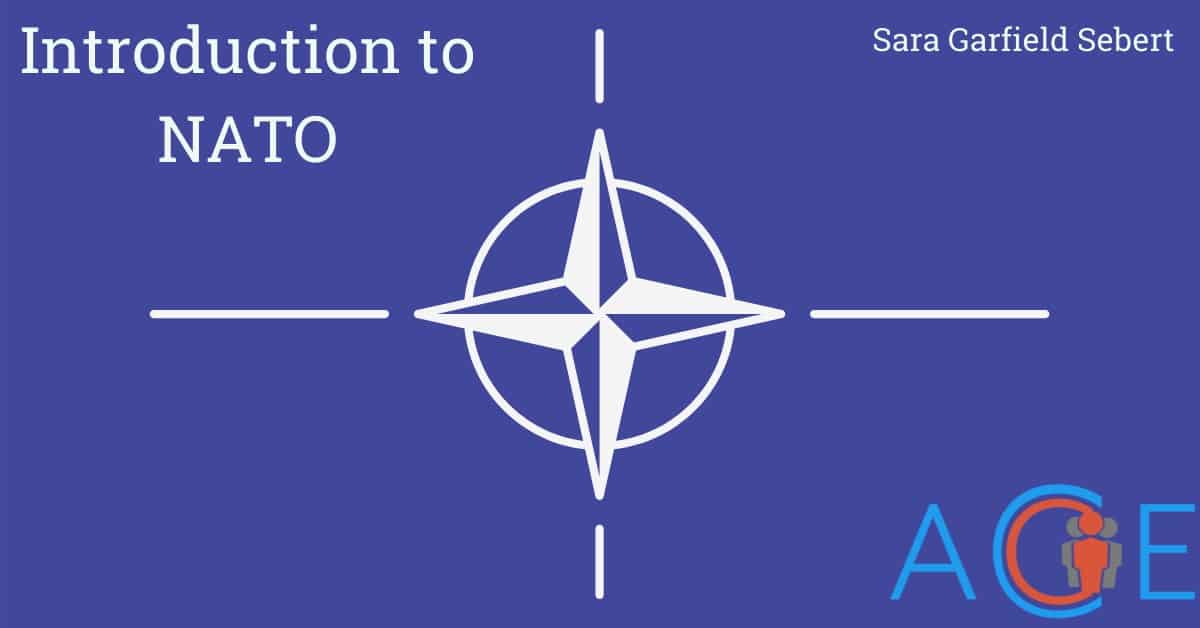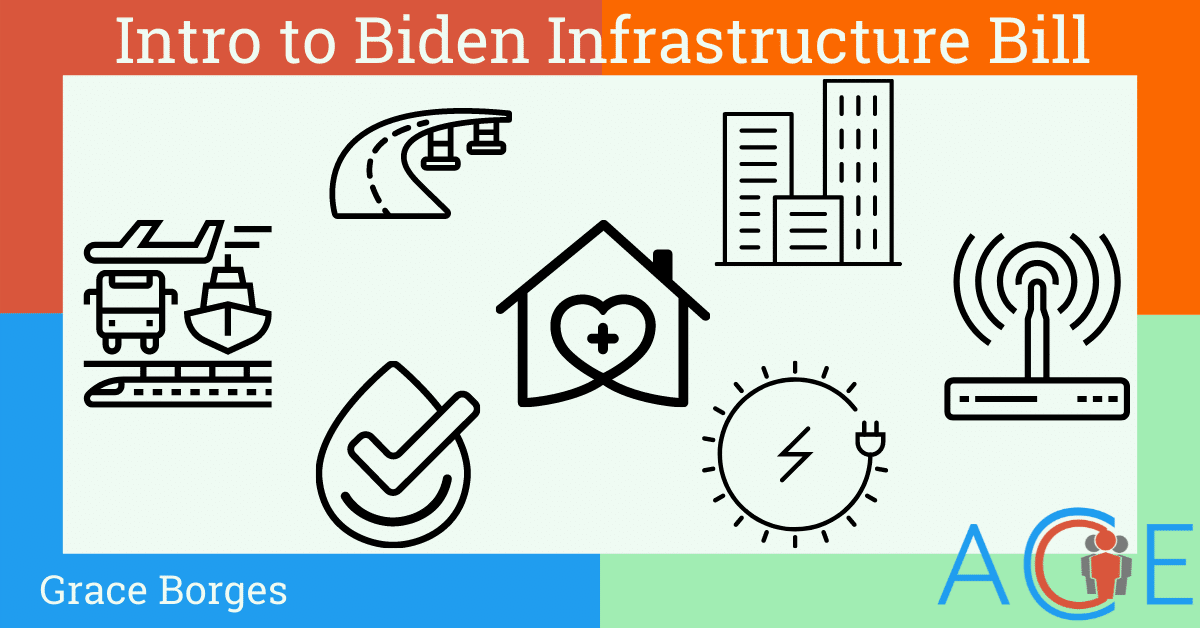Introduction
Environmental justice is concerned with the unequal distribution of environmental benefits and costs/damages amongst different social groups. “Environmental justice” typically refers to 1) the body of research aimed at identifying and understanding such inequalities, or 2) the social movement seeking to extend equal social participation in decision making processes to ensure all communities are able to have a say on activities that impact their environment. Environmental justice is an intersectional concept, combining notions of social justice with environmental advocacy, and holds that we are unable to care for the planet and combat climate change until we address the human lives that are put at risk from environmental degradation.
Environmental justice only became a mainstream movement in recent years. As a result, generations of impoverished individuals and/or people of color have faced disproportionately large ecological risks, often resulting in property loss, problematic health conditions, and/or death. In recent years, environmental justice has become increasingly relevant as climate change has exacerbated and created new environmental challenges which impact communities across the Country. By bringing these communities to the forefront of conversations about climate change and natural resource extraction and use, advocates hope to create a more inclusive and equitable environmental movement. Though the merits of environmental justice are refuted by some, who tend to dispute the existence of climate change or the ways in which communities of color are disproportionately impacted by policy failings, proponents highlight how discussing past and present instances of environmental injustices are critical in moving towards a more environmentally equitable future.
Factors which led to the Environmental Justice Movement
Issues of environmental injustice within the United States date back to some of the earliest appearances of European settlers. For example, European colonizers removed indigenous peoples from their land and forcibly relocated them onto unfamiliar, relatively unproductive territory. Settlers engaged in strategic buffalo killings, slaughtering them to near-extinction as a way to limit Native Americans’ food supplies, and European Americans consistently silenced indigenous peoples during attempts to speak out against their mistreatment and the mistreatment of the environment. Anti-indigenous sentiments held by the earliest European settlers still carry into the present day, as many Native Americans remain subjected to some of the worst environmental and health conditions in the nation. The 20th century in particular brought unique challenges for various vulnerable peoples. Urban planners placed the majority of waste incinerators in marginalized communities, leaving residents with harmful respiratory illnesses. Uranium mining companies created hundreds of mines on Navajo territory which greatly increased their lung cancer rates. Chemical plants were built in historically black and/or low-income neighborhoods, polluting their drinking water.
Though the environmental justice movement did not emerge as a coherent discourse until the 1980’s, these historical injustices fueled civil rights movements in the 1960’s which emphasised the continuing public health dangers faced by communities of color. In 1968, African Americans organized the Memphis Sanitation Strike to obtain better working conditions for Memphis garbage workers, largely considered one of the first attempts to advance issues of environmental justice within the US. This momentum carried through to 1982, when civil rights activists attempted to stop North Carolina from dumping 120 million pounds of PCB-contaminated soil (a persistent organic pollutant) into a county overwhelmingly occupied by African Americans. While the protest was ultimately unsuccessful, it led to several high profile prosecutions, and is seen to be the catalyst for the Environmental Justice Movement.
Arguments For Environmental Justice
Proponents of the Environmental Justice movement, specifically those directly impacted by environmental degradation and those who understand the urgency for climate action, seek societal and governmental change to rectify historical injustices and prevent the continued harming of marginalized communities. Government intervention is considered necessary because many of the problems occurring from injustices arise from federal and state policy failings or omissions. The growing threat of climate change is expected to disproportionately impact disadvantaged communities further.
- Inequalities in the ability to recover from wildfires worsened by global warming will leave many lower-income individuals homeless.
- The placement of low-income and minority housing in floodplains will cause them to experience higher death tolls under severe sea level rise.
- Disparities in emergency preparedness mean marginalized communities will face disproportionate risks as hurricanes become stronger and more frequent.
Overwhelming capitalist interests, systemic racism, class discrimination, and more, effectively devalue the worth of certain human lives over others and contribute to such environmental injustices.
Advocates argue that without adequate societal, cultural, and political changes, those bearing the brunt of the climate crisis will continue to be the country’s most vulnerable individuals. Marginalized communities already face discrimination and exclusion in various forms, putting them at a severe social, cultural, economic, and political disadvantage. More specifically, because marginalized communities have less time, resources, and political power to resist unequal environmental conditions, improving public awareness and motivation to tackle environmental injustices is an important first step. Not only does the power to address environmental injustices lie with policymakers, wealthy company owners, government agencies, etc., it lies with informed and democratically-engaged citizens. Whether through participating in citizen groups and activist organizations, voting for certain political candidates, or reaching out to elected officials, everyday citizens can create tangible differences in their communities, their states, and beyond.
Arguments Against Environmental Justice
The Environmental Justice Movement faces criticisms from those who believe that increasing government intervention is unnecessary, and simply gives politicians more power to control and harm American citizens. They claim the stricter rules and regulations following environmental justice advancements would inadvertently prevent the creation of jobs and reduce economic output. One example cited by environmental justice critics is the EPA’s 1998 blockage of the construction of a new plastics factory in Convent, Louisiana. What may have brought economic prosperity and 2,000+ jobs to a poor, predominantly African American town was instead halted by supposedly unfounded cancer concerns. Additionally, while many Americans can agree that pollution is an issue, some critics believe that the effects of pollution on the health of marginalized communities are negligible, citing behaviors such as increased smoking rates and drug usage as reasons for reduced minority community health.
Overview of Environmental Justice Policies
Since the 1980’s, local, state, and federally elected officials have attempted to address environmental injustices via legislation and policy changes. On the federal level, the National Environmental Policy Act (NEPA) requires federal agencies to take environmental justice into consideration when engaging in governmental activities. State involvement in tackling environmental justice issues vary widely, with some states establishing strong environmental justice policies, and other states such as Oklahoma and Arkansas having none at all. Among some of the most important state regulations regarding environmental justice are the policies outlined in the Virginia Environmental Justice Act, the goals set forth by the California Environmental Protection Agency, and the protections codified by New Jersey’s 2020 Environmental Justice Legislation. Policies on environmental justice can also differ at the local level, with some cities such as San Francisco choosing to consider the environmental justice implications of land use development in contrast to other areas of California, or Atlanta’s focus on public health implications.
While such policies have had some successes, a number of policies have limited and reversed attempts to address EJ issues. For example, the Trump administration’s first proposed budget diminished the EPA, including funding cuts to environmental justice programs. Scott Pruitt, the EPA Administrator under President Trump, marked a significant change for the Agency because Pruitt was well known as an adversary of the EPA who, as Oklahoma Attorney General, repeatedly sued the EPA in opposition to environmental regulation and openly advanced the energy industry’s agenda. President Trump also issued an executive memorandum directing the Secretary of the Army to take all legal steps consistent to approve permits necessary to complete the Dakota Access Pipeline. At a global scale, the Trump Administration’s rejection of climate science and repudiation of the Paris Agreement represents a conscious refusal to take steps to prevent and protect against climate change impacts.
With a new presidential administration, many policy changes are already being discussed regarding environmental justice. The Biden administration is expected to implement environmental justice across all federal agencies, especially the Environmental Protection Agency (EPA). The new EPA Administrator, Michael Regan, seems inclined to incorporate environmental justice as well. He created an Environmental Justice and Equity Board during his time as Secretary of the North Carolina Department of Environmental Quality (NCDEQ), which made beneficial changes including a community mapping system used to inform agency decisions by considering demographic and health information—and which could serve as a model for EPA decision-making. Additionally, the Biden administration is expected to withdraw the Department of Justice’s current prohibition on Supplemental Environmental Projects (“SEPs”). These are voluntary projects with environmental or public health benefits which were previously used as a component of enforcement settlement actions. Although they were considered to be a valuable tool in the Obama-led Department of Justice, they were nixed by the Trump administration due to administrative cost concerns. To proponents, not only are these a valuable compliance tool, they frequently contain a public accountability component which makes them even more effective and responsive to community needs. SEPs are expected to return as a component of EPA settlements in 2021.
In spite of widespread EJ implications from the Trump Administration’s heavy environmental protection and public health setbacks, state and local movements towards a more equitable future are gaining traction. While the federal response to addressing issues of environmental justice is historically poor, local communities have still had numerous successes. San Diego County’s overwhelming approval of an Environmental and Climate Justice Office, Michigan’s creation of the Office of the Environmental Justice Public Advocate, and the 2021 Massachusetts climate law prioritizing environmental justice are only a few recent examples of strong local efforts to ensure the health and safety of vulnerable residents. Such achievements are a testament to the changing attitudes and growing support towards environmental justice issues.
International Impacts
There is much work to be done before all communities experience equal distributions of environmental benefits and costs, especially on a global level. For example, the continued extraction and use of fossil fuels has astronomical impacts on the natural environment, as oil sand drilling, fracking, arctic drilling, and deep water petroleum sources contaminate fresh water, devastate marine systems, cause seismic activity, and exacerbate global warming. Another example is the implications that arise from fisheries around the world. Because of these fisheries, fish stock is decreasing causing concern of overuse and fish shortages. Small-scale fishing communities are reclaiming their rights for access to and control over aquatic commons. Some examples are the ones by intensive fish farms in Turkey or in Chile, big port projects in India and polluting industries in Ecuador. Climate change is a global problem which requires collaboration with other countries to find effective solutions.
Conclusion
For those interested in becoming involved in environmental justice, educating yourself and others is arguably the most important step, so sharing this page and additional ACE resources with those in your community can contribute towards a more environmentally equitable future. For more information on Environmental Justice issues check out the EPA website, or to find out more about how advocacy groups are getting involved, check out the Environmental Justice Foundation or We Act.

